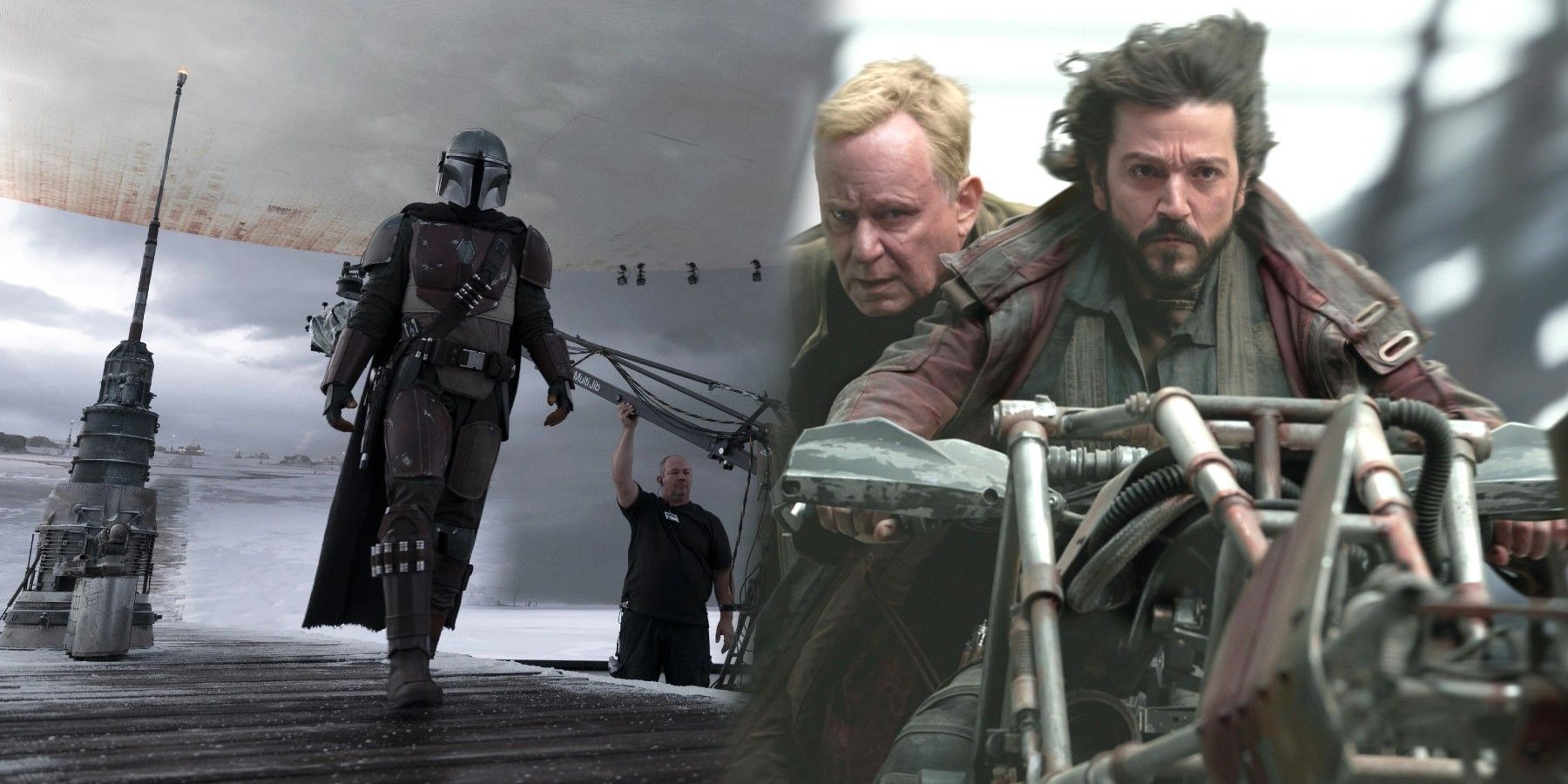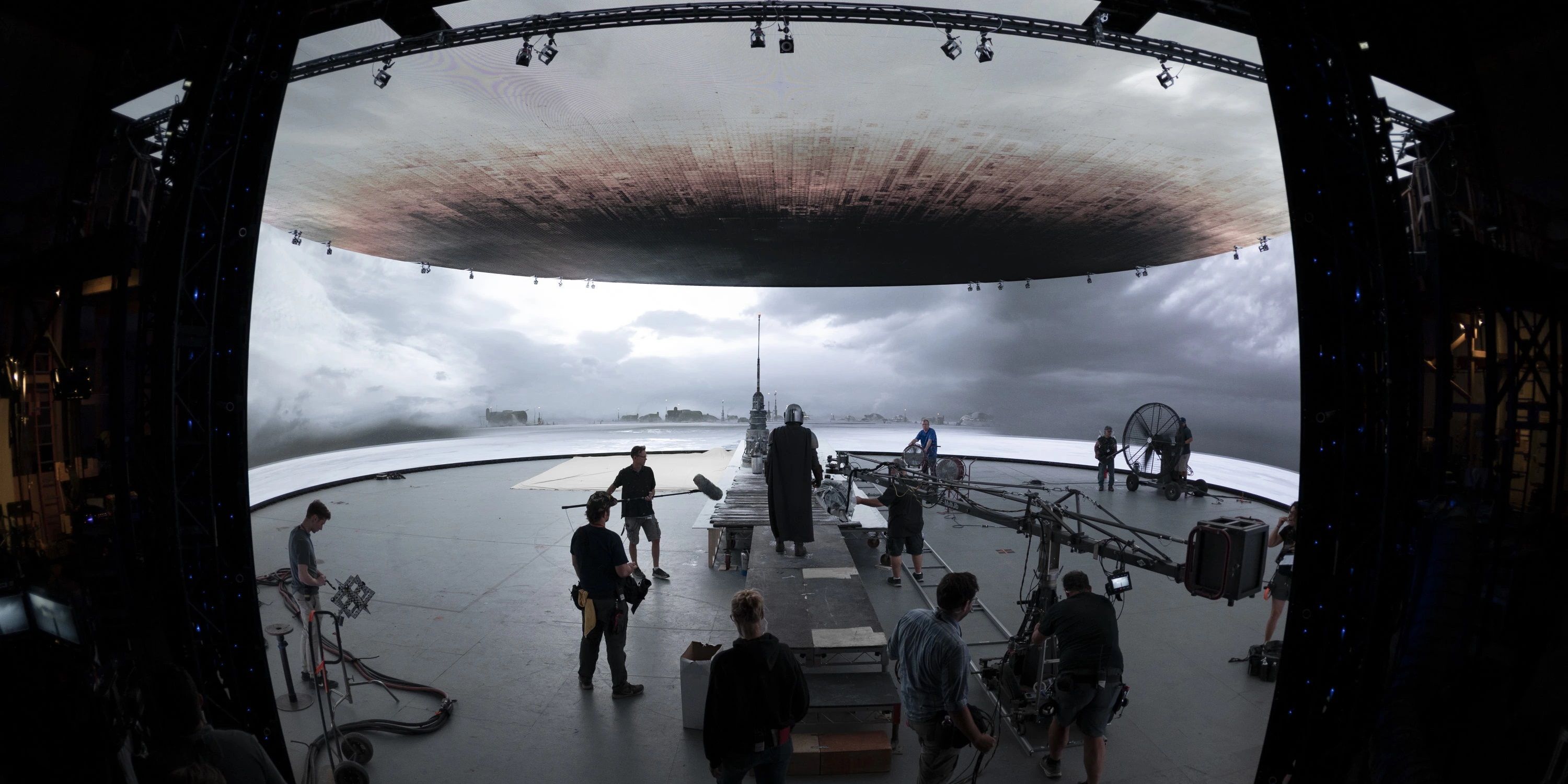Andor is shaping up to be the next big entry in the Star Wars juggernaut franchise when it premieres later this year on Disney Plus. But while many may see it as yet another similar series in the vein of The Mandalorian and The Book of Boba Fett, it turns out there's at least one big difference this time around. Sure, there are plenty of thematic differences, but the most notable one may be behind the scenes.
As a prequel to the more recently appreciated Rogue One: A Star Wars Story, Andor seems to be focusing on capturing the gritty realism that comes with being a story about war. One way they're accomplishing that is by foregoing an important piece of technology that has been employed by the various other Star Wars series up until now. The Volume (also known as Stagecraft), uses a series of high-definition screens to surround the actors with the CG environments that would otherwise have been added in post-production, allowing for a more authentic filming experience without using real sets. But it turns out that didn't fit with the plans for Andor.
Tony Gilroy, writer for the acclaimed Bourne films and creator of the Andor series, recently spoke to TVLine about why this production decided against using the Volume, and it turns out it has a lot to do with the size of the project. "Nobody's against the Volume — the Volume is fantastic for the things that it's for," he offered as a disclaimer before explaining the thought process. According to Gilroy, Andor "is just on a massively epic scale, and people would be running off the set all the time." Viewers may notice how much bigger everything seems just in the recently released Andor trailer, and the use of physical sets appears to be one big reason for that.
"Believe me, there were things we wish we COULD have done on the Volume, they might have been simpler!” Gilroy continued. “But our show is wide, it's huge, we have 211 speaking parts…. I think if we have this conversation at the end of the show, it will be different, because the width and breadth and visual ambition and traveling ambition of the show is huge. It just didn't lend itself to that kind of production." He went on to lament the inherent limitations of the tech, saying, "the technology is extraordinary. My god, it's going to become a larger, larger force in all filmmaking. The problem is right now there is no good way to do both. You kind of have to make a decision to be a Volume show or a non-Volume show."
Andor stars Diego Luna once again playing his Rogue One character of Cassian Andor. Set 5 years before the events of the film at the start of season 1, the show will follow Andor's journey as he becomes radicalized to rebel in the face of the many injustices enacted by the Galactic Empire. The show will also star Stellan Skarsgård, Adria Arjona, Fiona Shaw, Kyle Soller, and Denise Gough, with Genevieve O’Reilly playing Mon Mothma after appearing as the character in Rogue One and Forest Whitaker once again showing up as the militant Rebel leader Saw Gerrera.
This is a show that reportedly aims to challenge Star Wars fans' understanding of the canon, so there are bound to be a lot of unexpected elements showing up in Andor. Combine that with the use of physical sets for a much bigger production, and baby, they've got a stew going. Only time will tell how tasty that stew ends up being, but at the moment, it looks mighty chunky.
Andor will premiere its first 3 episodes on September 21st, 2022, on Disney Plus.
Source: TVLine


